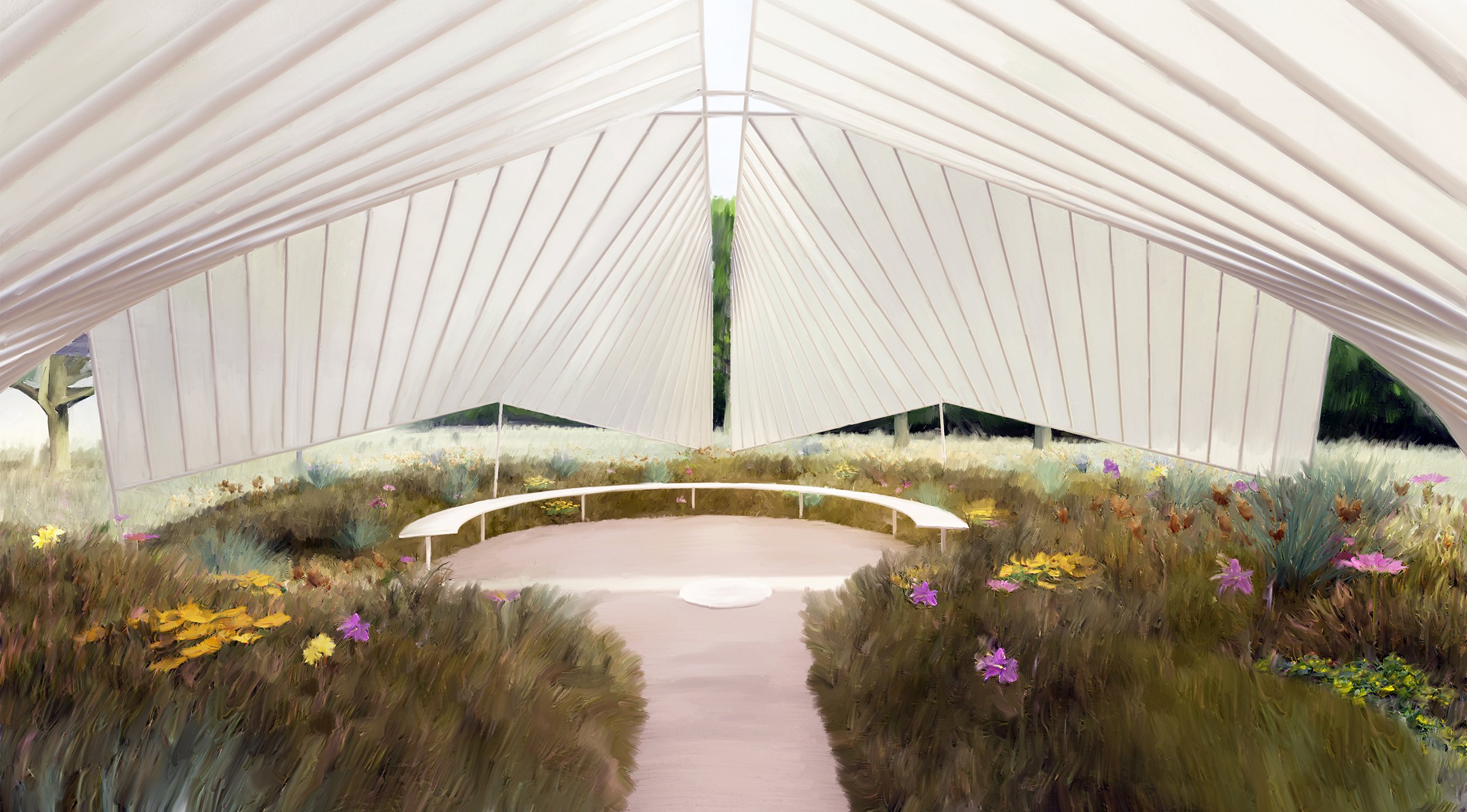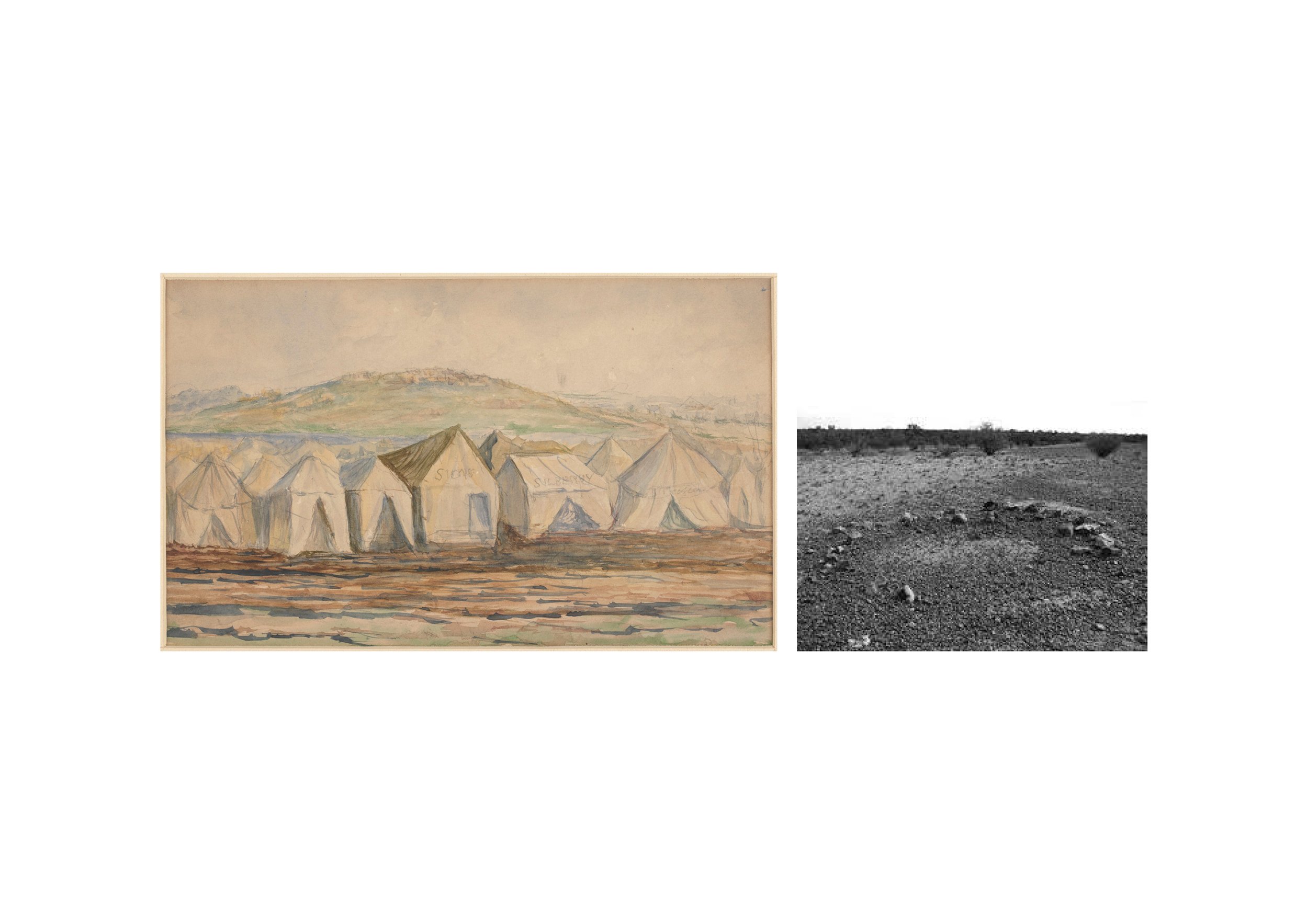1
2
3
4
5





Youssofzay + Hart were one of 10 practices invited nationally to submit a concept for the NGV Architecture Commission 2023. Their submission, titled Everpresent, was a collaboration with Zena Cumpston.
_
‘Everpresent’
For many migrants, historically, their first home in Australia has been a tent. From gold rush migration, where a settlement known as ‘Canvas Town’ occupied the current site of the NGV, to the tents of Afghan Cameleers traversing the harsh interior - this temporal structure has provided the necessary shelter against the elements. Consistent across all these journeys has been Country – everpresent within the cultural landscapes.
The proposal attempts to honour this history and the connection between transient dwelling and Country by creating an ephemeral shelter as a place for reflection and knowledge sharing. The structure also treads lightly on Country, and gently floats over an undulating landscape featuring endemic indigenous plants, including grassland and wildflower species, a sensory ground plane bolstering biodiversity and inviting all to remember this site is Country - a cultural landscape alive with its contemporary and ancient stories.
Addressing the Triennial themes “Magic, Matter, Memory” - the intervention offers visitors an immersive place of respite and is conceived as a provocation for discussion - asking us to look to history and to our changing natural environment without memorialising, instead understanding accounts of our intersecting journeys as a resource to address the issues that face us in the future: the empowerment of Indigenous knowledge, migration, multiculturalism, communication of climate change and custodianship of landscape.
The proposal was in collaboration with Zena Cumpston, a curator and plant specialist whose work centres around Aboriginal perspectives of biodiversity and ecological knowledge.
_
Reference images
Image 1 : Canvas Town South Melbourne, Watercolour painting by A.H.Kenyon, c. 1853
Collection of the State Library of Victoria
Image 2 : Example of a cameleer camp site at Oodnadatta from ‘Traces of the cameleers: Landscape archaeology and landscape perception’ by Rebecca Parkes.